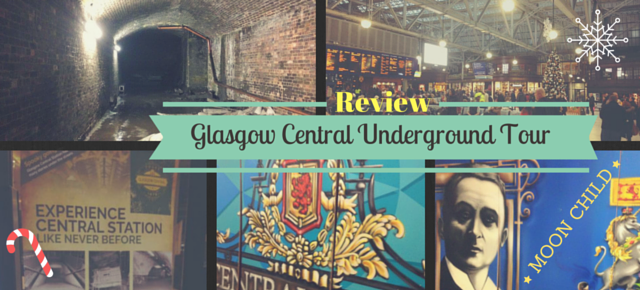
My visit to the hidden depths (and dungeons?) of Glasgow Central Station started at the meeting point opposite Marks and Spencers in the main part of Central we all know and love. Our tour guide and resident amaetur historian Paul Lyons greeted us with typical Glaswegian warmth and humour, and led us down to the vaults underneath the station to share the tales of the ghosts, histories, and voices of the station’s past.
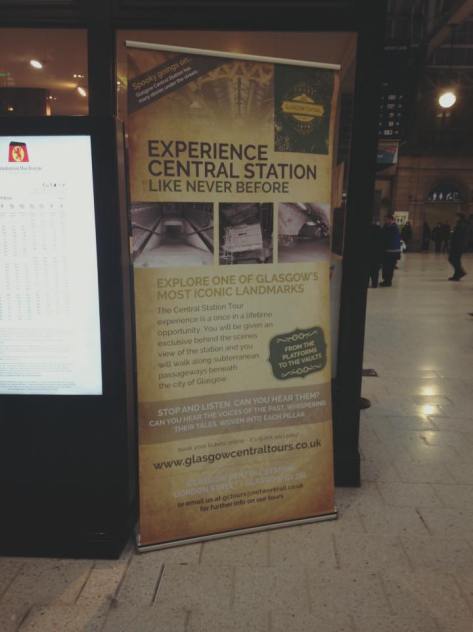
The station itself, with its colossal castle-like exterior, has always been one of Glasgow’s most iconic buildings, and is the very epicentre of the town.
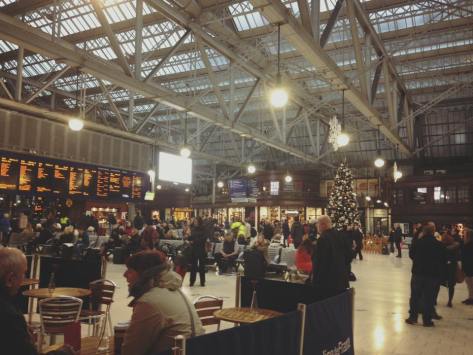
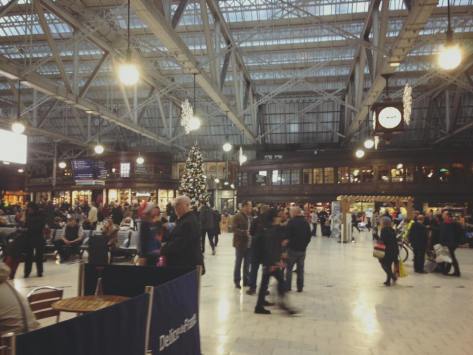
But this part of the station that we’re all familar with is just the tip of the iceberg, as there is a whole lot more underneath.
As Paul led us deeper down stony steps and dark corridors, he told tales of the original 1879 station in an enchanting Billy Connolly storytelling style of stories within stories, which was appropriate considering that Central Station is a place of rooms within rooms, buildings within buildings, and train station on top of village. (Glasgow’s equivolent of Atlanis, the Victorian village of Grahamston, lies beneath the station.)
Among Paul’s bucket load of facts were: the formerly-black Central Station gates which have now been restored back to the classic green and gold colours of the original Caledonia Railway Company (at the cost of £48,000) were originally painted black because of the mounring Queen Victoria who visited the city during the Glasgow International Exhibition in 1888; the stunning roof of Central contains a staggering 48,000 panes of glass; and the girders that hold the roof up (a magnificent feet of engineering and architecture) haven’t moved an inch since their installation (which, bolt by bolt, was all done by hand).
Walking through the depths of the station, we also saw countless murals dedicated to the station and its history, including memorials to the station’s famous architect James Miller, and some to commemorate the First World War.
It was here that Paul shared a largely untold story of the women of Glasgow during the war. While the city centre is littered with memorials and statues dedicated to heroic men in Glasgow’s history, Paul pointed out that the story of the women who suffered during WW1 has been all but forgotten.
It was in this room (picture below) that a temporary mortuary was set up to hold deceased soldiers that were brought back to Glasgow from France. Due to funding shortages, the men weren’t even brought back in coffins but were instead carried off trains and into the mortuary on stretchers, and staked sometimes four or five bodies high. When the bodies arrived, the girlfriends, fiances and wives of the deceased had to go down into the lower level of the station to identify their loved ones, some of which had such horrific facial injuries that identification was nigh on impossible.
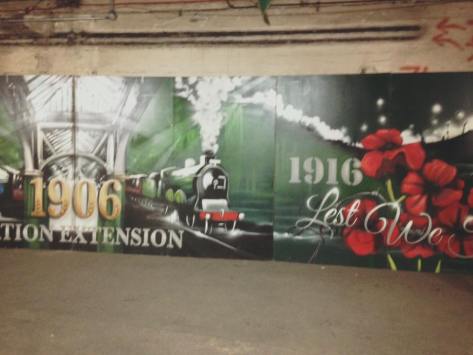
Only women between the ages of 18 and 26 went into the mortuary to identify their boyfriends, husbands, and brothers, and were expected to carry their loved out up and out of the mortuary. Carrying a body singlehandedly, however, was not possible. And as a result, the women had to go back up to the main station and pay strangers, usually unemployed men looking to make a few bob, to come down and carry their loved one out of the mortuary. The deceased would then be put in a barrow and taken home.
Paul, himself, said that while it is men who start and fight in the wars of the world, it is women who are expected to clean up the mess left behind, and hardly ever receive any thanks for doing so. Paul reminded us that some of the stories and histories of the station may not be happy ones, and he doesn’t tell them for a laugh, but he tells them for a reason. It is important that we all take an interest in our local, as well as national, history and keep the stories alive of those who have largely been forgotten. Paul does, however, plan to have a poem and a plaque put on the wall in this room to commemorate the women who suffered during the war.
For the lucky soldiers who did return home alive, their girlfriends, fiances, wives, mothers, aunties and grandmothers would be waiting at Platform 1 with rows and rows of candles. But this, surpsingly, wasn’t a romantic or sentimental gesture. They, in fact, used the candles to burn the lice off the men’s kilts as their uniforms would be crawling with the creatures, and Glaswegian housewives certainly didn’t want those in their house.
Moving on further down into the station, Paul then took us to the famous Victorian platform.
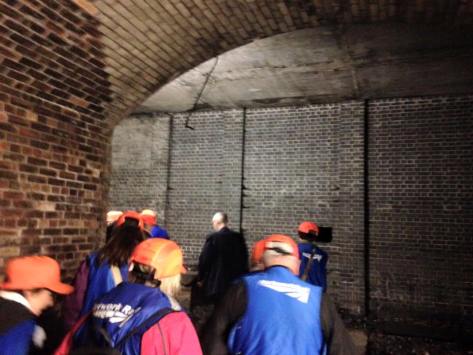
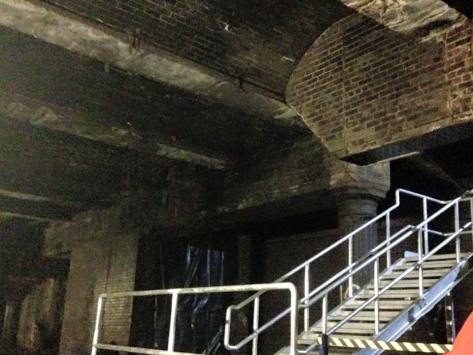
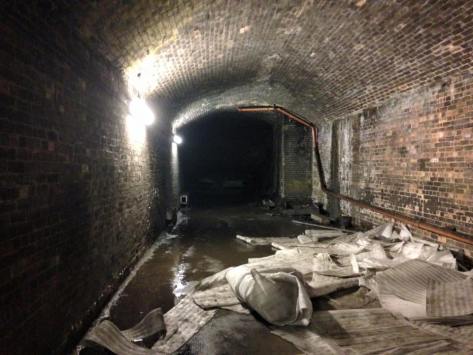
This platform is even close enough to the present day platforms on the lower level of the station that you can see trains approaching in the distance through the tunnel, and, for a moment, as the train lights create an optical illusion, you start to think that a train really is rolling in to the Victorian platform.
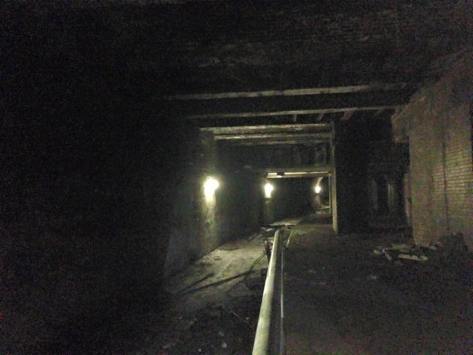
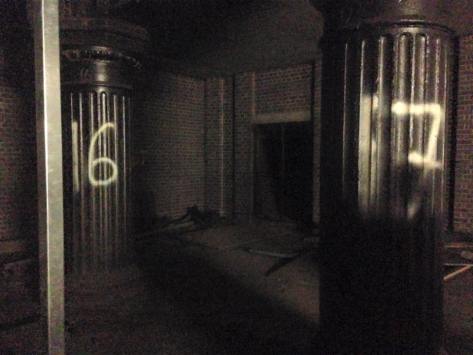
(These staggering, solid columns seen above which support a large section of the station would, in today’s money, cost around £42,000 each to make.)
Paul also told us about his hopes and plans to further restore the platform, including advert posters from the period up on the walls, and even having a real, preserved Victorian carriage installed into the indentation on the platform.
Paul and his team, even now, are continuously knocking down walls and discovering more amazing finds in this seemingly never-ending, magical (and possibly haunted?) station. Only recently, he discovered old newspapers from the 1900s, and knocked down a wall into a room to find stakes of old style telephones.
The Glasgow Central Tour is one that is constantly evolving as the team discover and restore more of the hidden lower level piece-by-piece. So, every time you go back, you’ll hear new-old stories and see new things.
While many attractions such as this one have actors, scripts and gimmicky costumes, the Glasgow Central Tour is a fascinating, engaging and genuine re-telling of the history of Scotland’s most famous train station, presented by an extremely passionate and enthusiastic team. Tour guide Paul (who could give Neil Oliver a run for his money) has a natural knack for storytelling, putting people at ease, making people laugh, and also making people think. His enthusiasm for Glasgow’s history is infectious, and this tour is a must-do for tourists and locals alike.
The money raised by ticket sales is used to fund in the development of the tour. So, you know your money is going to a good cause! I couldn’t recommend the tour enough, and I can’t wait to go back soon and see what’s new (or old?).
Rating: 5/5
You can follow the Glasgow Central Tour on Twitter (seen below), and visit the website to buy tickets and learn more.
This is what we call a busy platform in the 1879 Station. look at where the platforms end! https://t.co/fIkoEaPWI2 pic.twitter.com/8zm2dCvzyf
— Glasgow Central Tour (@GLCTours) October 24, 2015
What do you think about this blog post on the Glasgow Central Tour? Let me know in the comment section below.
